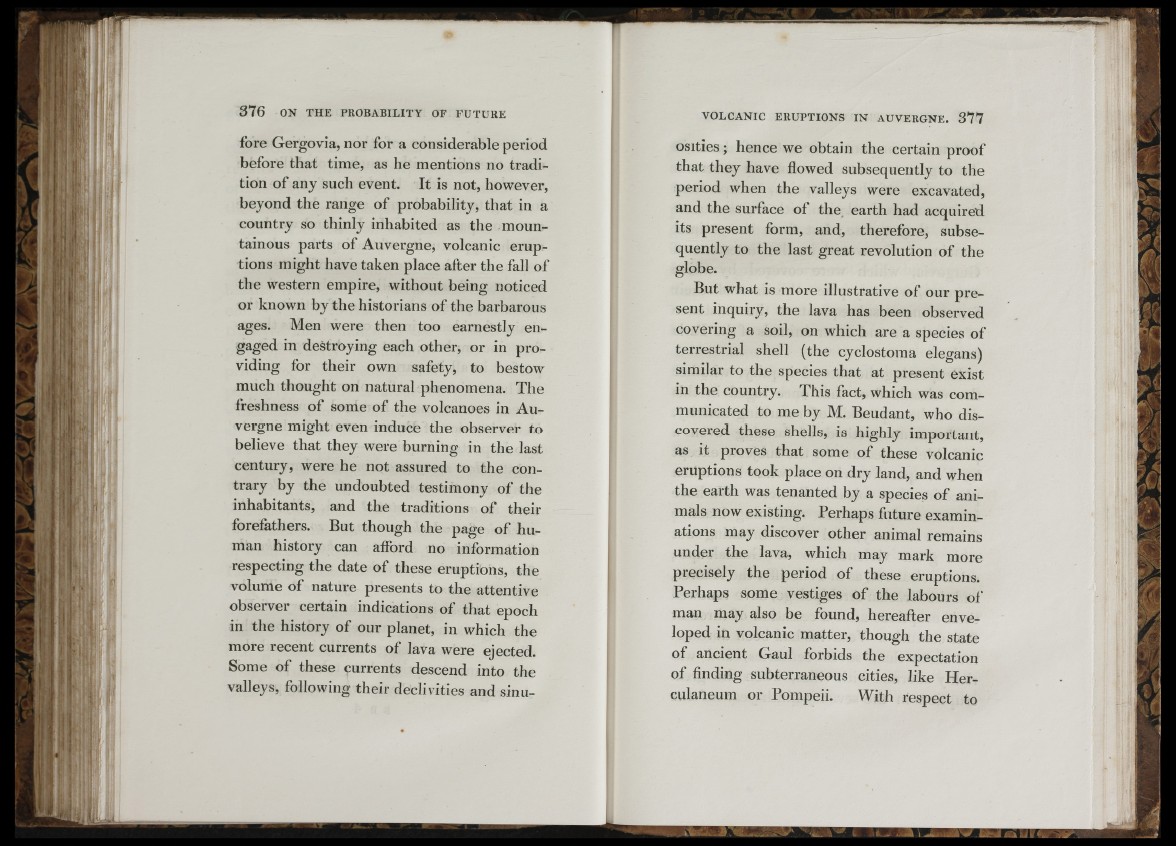
-/t: I I CJi l 6i'
id
k in
Î1
I .... . j
i 13:
“ rl
i i
n
‘ i ‘j" ^
fore Gergovia, nor for a considerable period
before that time, as he mentions no tradition
of any such event. It is not, however,
beyond the range of probability, that in a
country so thinly inhabited as the mountainous
parts of Auvergne, volcanic eruptions
might have taken place after the fall of
the western empire, without being noticed
or known by the historians of the barbarous
ages. Men were then too earnestly engaged
in destroying each other, or in providing
for their own safety, to bestow
much thought on natural phenomena. The
freshness of some of the volcanoes in Auvergne
might even induce the observer to
believe that they were burning in the last
century, were he not assured to the contrary
by the undoubted testimony of the
inhabitants, and the traditions of their
forefathers. But though the page o f human
history can afford no information
respecting the date of these eruptions, the
volume of nature presents to the attentive
observer certain indications of that epoch
in the history of our planet, in which the
more recent currents of lava were ejected.
Some of these currents descend into the
valleys, following their declivities and sinii-
V O L C A N IC E R U P T IO N S IN A U V E R G N E . 377
osities; hence we obtain the certain proof
that they have flowed subsequently to the
period when the valleys were excavated,
and the surface of the earth had acquired
its present form, and, therefore, subsequently
to the last great revolution of the
globe.
But what is more illustrative o f our present
inquiry, the lava has been observed
covering a soil, on which are a species of
terrestrial shell (the cyclostoma elegans)
similar to the species that at present exist
in the country. This fact, which was communicated
to me by M. Beudant, who discovered
these shells, is highly important,
as it proves that some o f these volcanic
eruptions took place on dry land, and when
the earth was tenanted by a species of animals
now existing. Perhaps future examinations
may discover other animal remains
under the lava, which may mark more
precisely the period o f these eruptions.
Perhaps some vestiges o f the labours of
man may also be found, hereafter enveloped
in volcanic matter, though the state
of ancient Gaul forbids the expectation
of finding subterraneous cities, like Herculaneum
or Pompeii. With respect to
L